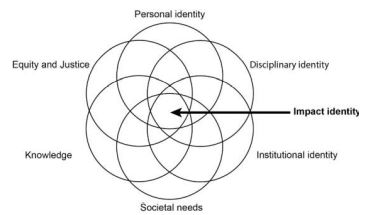
Upcycled floating home and garden on the Mississippi River.

"Art on the Mississippi River" in Dubuque, Iowa.

Paddlers and power plants.
The Artist in Residence (AiR) instructs core curriculum, facilitates workshops and community engagement efforts, and enables the development of each Trainee’s impact identity. We believe artists and their partners in the community have the power to see circularity in unique ways, shift cultural values around water and resources, build demand for equitable solutions, and inspire innovation – all through social practice art-making.
To paraphrase one student in the NRT program: Gudrun’s presence and ability to facilitate conversations across all elements: class, field trips, guest speakers, and cohort meetings has been really helpful. “Gudrun asks questions that students are wondering but don’t know how to ask.”
This unique aspect of the NRT program provides Trainees with a deeper understanding of their identities as professionals, researchers, and members of communities. Using the framework illustrated below and under the guidance of the Artist in Residence, Trainees explore:
- personal identity (life experience and cultural background)
- disciplinary identity (conventions and perceptions of the profession)
- institution identity (norms and goals of the employer/institution)
- societal needs (current and future)
- knowledge (disciplinary, community, Indigenous)
- equity and justice (positive and negative impacts of proposed solutions)

Working as a co-instructor in the GCC 5044 Circularity course, in groups and individually, the Artist in Residence helps develop Trainees’ impact identities using methodologies of socially engaged art, including but not limited to: community development; place- and context-specific creative problem solving; structured conversations and creative cross-disciplinary collaborations; and non-hierarchical approaches to leadership.
To see the latest report on field trips or events hosted by the Artist in Residence, visit the Events page.